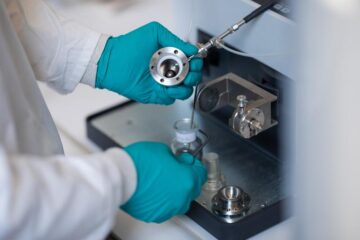Caesareans could make it more difficult to have other children

Women having their babies by caesarean section could find it harder to become pregnant later, a study has found. Researchers in Bristol have discovered that once women have had a caesarean and then try to get pregnant again, the risk of it taking more than a year to conceive another baby increases.
The seven thousand women were all part of the Avon Longitudinal Study of Parents and Children (ALSPAC), popularly known as Children of the 90s, which has monitored the health and development of over 14,000 families since the early 1990s.
The research from the Bristol University study, published today in the journal Human Reproduction, found that when women who had previously had a caesarean tried to get pregnant again there was almost double the risk of it taking longer than a year. The risk following caesarean section was 12% compared to 7% for women with no previous caesarean.
The increased risk remained significant even taking into account such important additional factors such as the ages of both mother and father, how long they had lived together, oral contraceptive pill use, cigarette exposure, alcohol consumption, educational level and ethnicity.
The rate of caesarean section has risen nationally threefold in the past 25 years without any evidence of improved outcomes for the mother or baby. One in five women having babies in the United Kingdom is now delivered by caesarean section. Little attention has been paid to whether there is any relationship between caesarean section and subsequent infertility.
Research scientist Dr Deirdre Murphy from the Obstetrics and Gynaecology Division of the University of Bristol says “We looked at the delayed ability to conceive of women who did eventually go on to get pregnant. This may be underestimating the true magnitude of the association. It is possible that some women will choose not to have a further pregnancy because of the trauma of a section or will fail to achieve any further pregnancy following caesarean section. ”
“Further studies in other populations are needed to confirm our finding that caesarean section may have a negative influence on future fertility,” she adds. “Reliable evidence on long-term consequences of caesarean section is essential, if women are to be offered informed choice with regards to mode of delivery when they have their babies.”
Media Contact
All latest news from the category: Health and Medicine
This subject area encompasses research and studies in the field of human medicine.
Among the wide-ranging list of topics covered here are anesthesiology, anatomy, surgery, human genetics, hygiene and environmental medicine, internal medicine, neurology, pharmacology, physiology, urology and dental medicine.
Newest articles

Security vulnerability in browser interface
… allows computer access via graphics card. Researchers at Graz University of Technology were successful with three different side-channel attacks on graphics cards via the WebGPU browser interface. The attacks…

A closer look at mechanochemistry
Ferdi Schüth and his team at the Max Planck Institut für Kohlenforschung in Mülheim/Germany have been studying the phenomena of mechanochemistry for several years. But what actually happens at the…

Severe Vulnerabilities Discovered in Software to Protect Internet Routing
A research team from the National Research Center for Applied Cybersecurity ATHENE led by Prof. Dr. Haya Schulmann has uncovered 18 vulnerabilities in crucial software components of Resource Public Key…





















